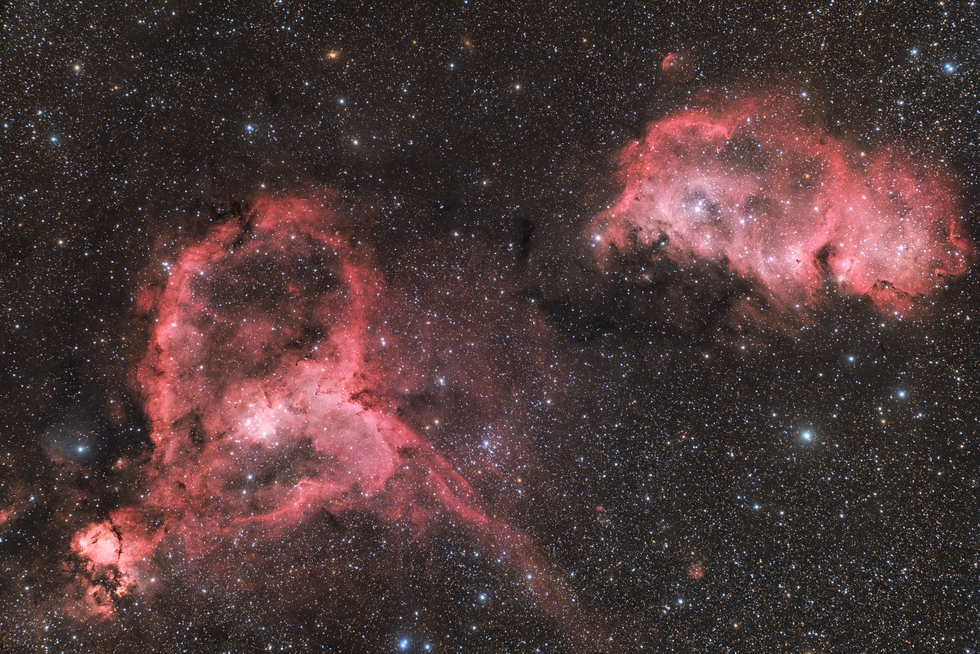The Heart and the Soul of the sky
The Heart and the Soul of the sky
Between the constellations of Cassiopeia and Perseus, the Milky Way shows its valuable jewels, being one of the richest areas in deep-sky objects, more or less obvious against the crowded background of the galactic plane. Not far from the Double Cluster in Perseus, we can find another doublet very popular for astrophotographers – Heart and Soul Nebulae – with a total diameter of over 600 light-years.
Heart Nebula (Sh 2-190) is an emission nebula 7.500 light-years away which looks very similar to the life-giving organ. However, its bloody color is given by the intense radiation coming from the open cluster in the middle – IC 1805 – made up by young stars, some of them 50 times heavier than the Sun. The Heart Nebula wasn’t discovered as a whole, but it all started with the Fish Head Nebula (NGC 896), one of the brightest parts of it, discovered by E.E. Barnard somewhere around 1890.
Soul Nebula (Sh 2-199) is very similar to its neighbor, being a nebulae complex ionized mainly by the open cluster IC 1848, but also by other smaller clusters within (Cr 34, Cr 632, Cr 634). The stellar activity is more intense here, with many gas collapsing areas into protostars. The age of the stars increases with the distance from the center, showing multiple star-forming episodes.
Heart Nebula (Sh 2-190) is an emission nebula 7.500 light-years away which looks very similar to the life-giving organ. However, its bloody color is given by the intense radiation coming from the open cluster in the middle – IC 1805 – made up by young stars, some of them 50 times heavier than the Sun. The Heart Nebula wasn’t discovered as a whole, but it all started with the Fish Head Nebula (NGC 896), one of the brightest parts of it, discovered by E.E. Barnard somewhere around 1890.
Soul Nebula (Sh 2-199) is very similar to its neighbor, being a nebulae complex ionized mainly by the open cluster IC 1848, but also by other smaller clusters within (Cr 34, Cr 632, Cr 634). The stellar activity is more intense here, with many gas collapsing areas into protostars. The age of the stars increases with the distance from the center, showing multiple star-forming episodes.
SPECIFICATIONS
Telescope
Takahashi FSQ-106ED f/3,6
Camera
QHY 600M
Location
Spain
Date of observation
Nov-Dec 2023
Filters
LRGB
Processing
PixInsight



